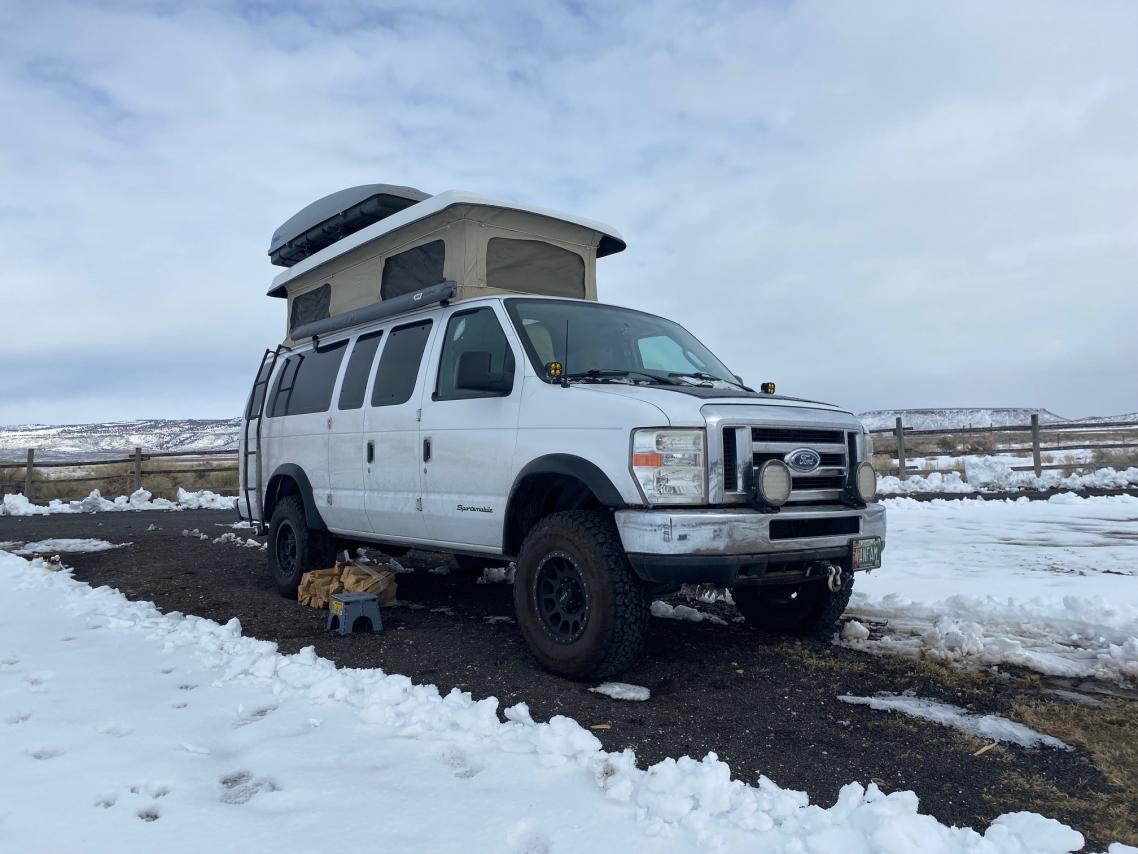I spent the weekend camping and it was extremely cold so I was intentionally able to really test the install and I wanted to share my finding as it may assist in your install:
First of all, if you are thinking about installing one, just do it. It is so incredibly nice and comforting to know that you can turn on dry heat anywhere. You can quickly dry wet clothing, pre-warm the vehicle before and after bed, leave it running while you are out doing things, etc.
You can leave these running while you sleep, unlike other fuel powered heaters where carbon monoxide poisoning is a concern. Some may experience adverse affects from the dry air itself, so be aware if you are sensitive to that and add a portable humidifier to the equation if needed. Obviously you want to have a low mounted (carbon monoxide is heavier than ambient air) carbon monoxide detector. Before we left on this trip, my wife fully tested the cabin air with a meter and there was no leaking present or ingress from windows, doors, etc so I felt safe leaving it running all night if needed. I sealed the turret using fire block caulking so it should hold for a long time.
During our trip, we left the heater running on a low setting throughout the day as the outside temp was around 25-30*f. On the first night, I cranked it up as we got into bed and it was very warm so I went ahead and turned the unit off with the expectation I could turn it back on if it got too cold. 4 hours later, it was indeed very cold inside so I reached up and turned the unit on.
The fan came on but as the glowplug turned on, the voltage dropped from 13 volts, to 8.5 volts and I got a voltage error code and voltage would increase to 12 volts. Frustrated, I tried again a few times and kept getting the error and shutdown. So....it was a cold first night.
The next morning, I started the vehicle and with the truck running the voltage was enough to power the unit on and once running the voltage is around 2volts or less.
My system consists of a starting battery, isolator to a lead acid deep cycle house battery, and then 10AWG wire to a fuse panel at the rear of the vehicle where the heater is connected. 10awg was what I used because I had it and it is sufficient, but the combination of the voltage drop in that length and the fact that the fridge also draws from that same house battery is causing just enough to prompt a low voltage shut down at 8volts. I have a hood mounted solar panel, which provides enough starting power to run the heater in the day time, so when
I was testing it after install in the daytime I didn't experience this error.
Summary of findings:
- I will upgrade to 6-4awg running to the rear panel (and possibly another house battery, not necessary but just a preference)
- Starting the vehicle at night to allow heater to begin combustion is not a huge hassle, but isnt ideal if the goal is efficiency.
- I run the heater on it's highest setting at startup, and shutdown to burn as much carbon build up as possible and hopefully lengthen service. I also run it on full while unloading after a trip, again just to get that soot out.
- The heater will run all night, if the startup procedure is followed and is safe and comfortable.
- Ensure that interior ducting exhaust isn't blowing on anything that is sensitive to heat. In my case, the duct blows directly onto my fridge which is not ideal so I placed some Reflectix bubble insulation there and it kept the fridge body cool. I will also be placing a T fitting in the ducting to run another vent on the other side and distribute the heat a little better.
Anyhow, hopefully this is helpful and you can learn from my mistakes!
